The Punakha Tsechu is one of the most popular Tsechus (Festivals) in the country. It is held right after the popular Punakha Drubchen. The unfurling of the thongdrel (a large tapestry) of Guru Rinpoche is the main attraction of the festival. Thousands of people from the valley and other parts of Bhutan attend the festival making the festival one of the biggest event in the valley. Colorful mask dances and traditional dances honor Guru Padmasambhava as in all Tsechus in Bhutan.
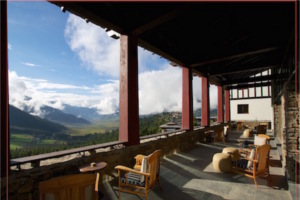
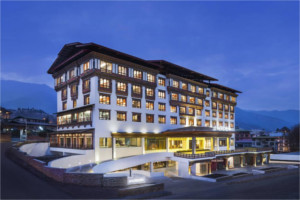
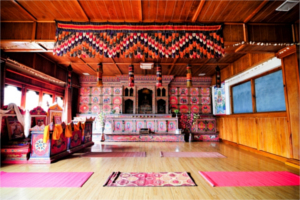
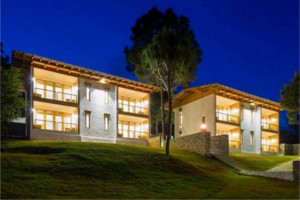
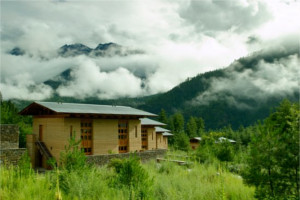
Fly into Paro valley.
The fight into Bhutan over the Himalayas is one of the most spectacular experiences. Particularly the flights from Delhi (India) and Katmandu (Nepal) fly past the majestic Mt. Everest, Kanchenjunga and the entire Himalayan range, visible on the left side of the plane as it glides towards Bhutan. On landing at Paro, you will be received by our representative. After customs and Immigration formalities, you will be escorted to Thimphu, the capital city.
Overnight in Thimphu.
Breakfast
Visit the National Memorial Chorten (Stupa), built in memory of the 3rd King of Bhutan. Visit the Art School and Changangkha Lhakhang (a temple built in 12th century by a Tibetan saint).
Visit the National Takin Reserve Center to see Takin, the national animal of Bhutan and Trashichhodzong (fortress of glorious religion). Trashichhodzong in its current form was completed in 1968 and it houses the throne room of His Majesty the King of Bhutan. It is also a center of monastic body and houses main secretariat building. The majestic Dzong located along the Wangchu (Thimphu River) has a Tendrel Thang which is the venue for Thimphu Dromchoe and Thimphu Tsechu, the annual Thimphu Festival where thousands of people fill the courtyard to witness the mask dances, traditional dances, and many more.
Visit Buddha Dordenma, the largest standing Buddha Statue in the world. Buddha Dordenma is 54 meters (177 ft) tall, one of the largest Buddha Shakyamuni statue in the world, fulfilling a prophecy that mentioned a large statue of either Guru Padmasambhava, Buddha or of a (Vajrakilaya) Phurba would be built in the region to bestow blessings, peace, and happiness on the world, the statue erection was started in 2006 and completed in 2015. The statue is mentioned in the ancient Terma of Guru Padmasambhava himself dated from approximately the sixth century, the prophesized Terma was recovered some 672 years ago by Terton Dorje Lingpa (1346) and 104 years and after 568 years ago by Terton Pema Lingpa.
Stop at Dochula pass (3100m) on route to Punakha from Thimphu. Dochula pass is one of the famous landmarks in Bhutan from which one can sight the Himalayan Range of Bhutan on clear winter days. The place is adorned with Druk Wangyel Chorten, 108 stupas built to honor the 4th king of Bhutan and bring peace to the region. The stupas were built under the patronage of Ashi Dorji Wangmo Wangchuck.
Descend to Punakha Valley (1280m).
Punakha valley served as the capital of Bhutan till 1955 until it was shifted to Thimphu. The Punakha Dzong is still the winter seat of Je Khenpo (Chief Abbot) of the monastic body as the place has a temperate climate with Phochu and Mochu Rivers flowing through the fertile fields of the valley.
In the afternoon hike to Khamsum Yulley Namgyel Chorten through fields of vegetables, rice paddies, and tiny hamlets. The Chorten holds very special significance as it was consecrated in order to bring peace and harmony to all the living beings in the region.
Overnight at Punakha
After breakfast drive to Dzong to witness festival, the Punakha Tsechu is considered to be the most significant one religiously, traditionally, and culturally. It is held right after the popular Punakha Drubchen. The festival honors Guru Padmasambhava and thus the unfurling of the Thongdrol of Rinpoche is witnessed by thousands every year.
Overnight at Punakha
Witness 2nd day of the festival in the courtyard of the Dzong and in the afternoon, go on sightseeing around Punakha valley.
Walk over the longest suspension bridge in Bhutan just a small distance from the Dzong over emerald blue Pho Chu River.
Overnight at Punakha.
Breakfast
Visit the Dzong to witness the final day of the festival. Drive back to Paro in the afternoon with a stop at Chimmi Lhakhang (the famous Lama Drukpa Kuenley’s Temple) and Dochula Pass (3100m).
Reach Paro in the evening.
Overnight at Paro.
Early breakfast
Hike for about 4 hours to Paro Taktsang, the famous Tigers Nest monastery which is perched on a cliff at about 900m above the Paro valley.
In the afternoon visit Kyichu Lhakhang, the oldest temple in Paro. Originally built in 7th century by Tibetan Emperor, it’s one of the 108 temples he built in the region. The temple is believed to have spiritual treasures concealed by Guru Padmasambhava and the two orange trees in the courtyard defy the natural way of orange trees usually growing in lower altitude and it’s believed to bear fruit throughout the year.
daily tariff:USD 250 Per person per night
surcharges:
Solo Traveller: USD 40 per night
Dual Traveller: USD 30 per person per night
Three travellers and above: surcharges not applicable
Visa fees: One time payment of USD 40 per person.
daily tariff:USD 200 Per person per night
surcharges:
Solo Traveller: USD 40 per night
Dual Traveller: USD 30 per person per night
Three travellers and above: surcharges not applicable
Visa fees: One time payment of USD 40 per person.
A minimum of 3 star accommodation (4 & 5 star may require an additional premium).
All meals
A licensed Bhutanese tour guide for the extent of your stay
All internal transport (excluding internal flights)
Camping equipment and haulage for trekking tours